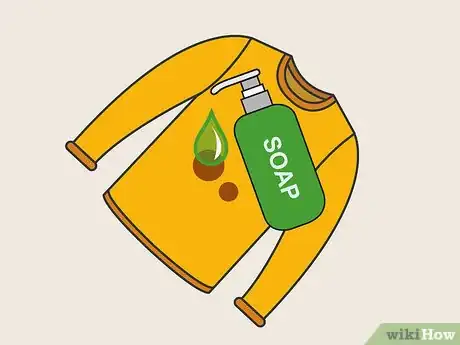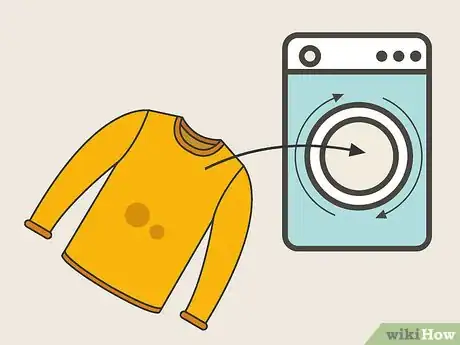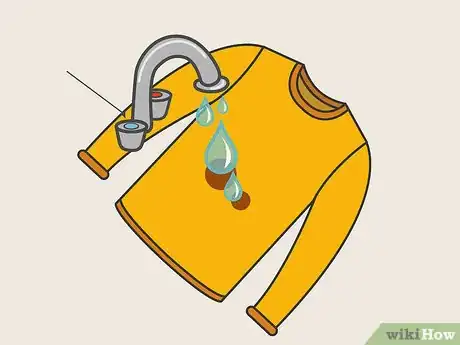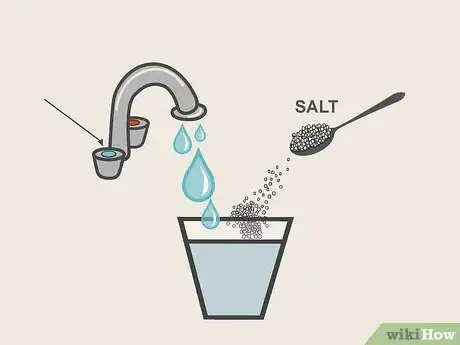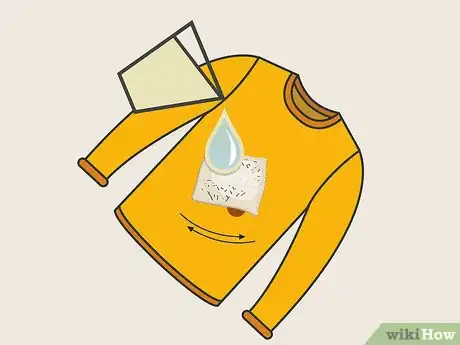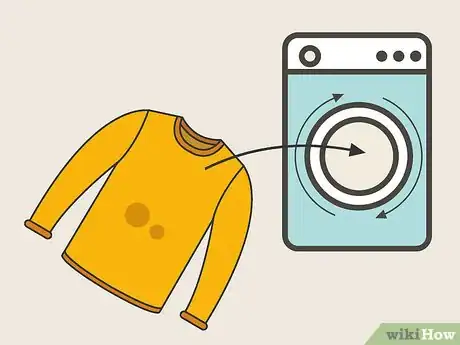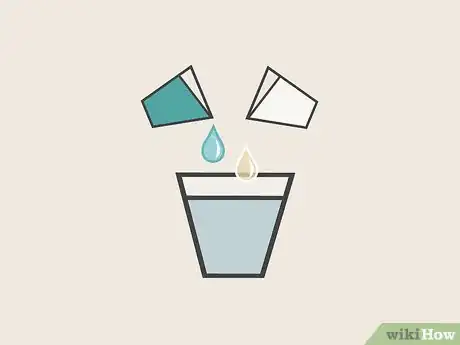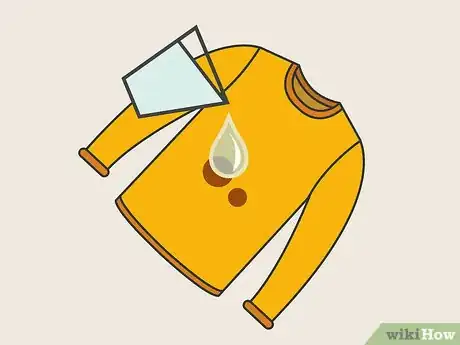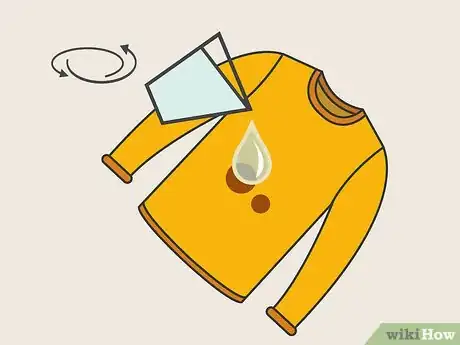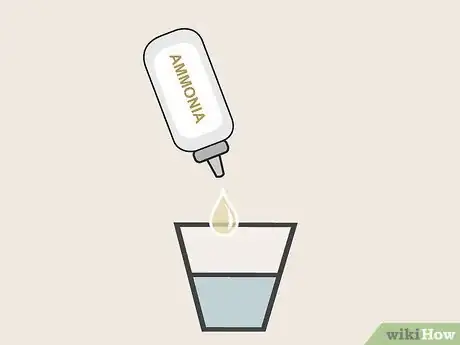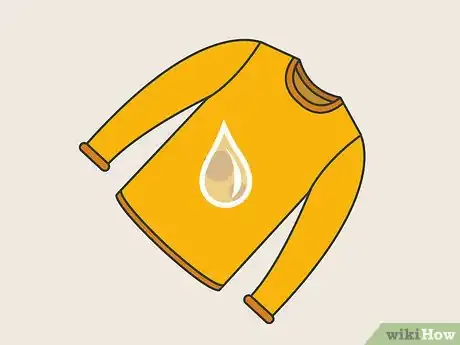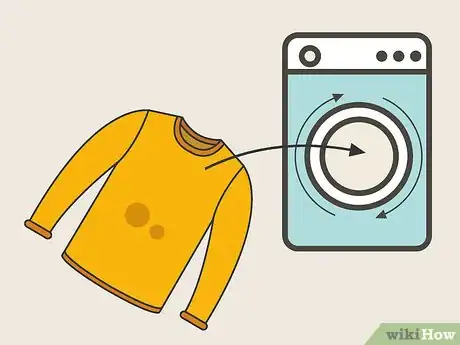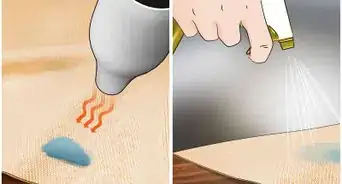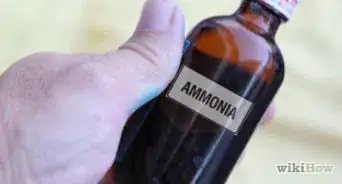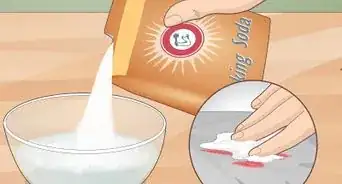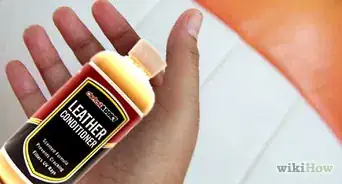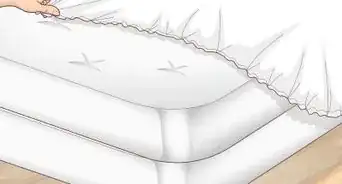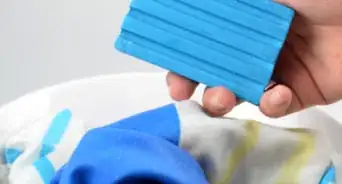This article was co-authored by Susan Stocker. Susan Stocker runs and owns Susan’s Green Cleaning, the #1 Green Cleaning Company in Seattle. She is well known in the region for outstanding customer service protocols — winning the 2017 Better Business Torch Award for Ethics & Integrity —and her energetic support of green cleaning practices.
wikiHow marks an article as reader-approved once it receives enough positive feedback. In this case, 100% of readers who voted found the article helpful, earning it our reader-approved status.
This article has been viewed 603,668 times.
Blood stains on clothing are typically unexpected and can be frustrating to remove. A blood stain should be removed carefully to avoid damaging the clothing. Hot water or chemicals that are not appropriate for fragile fabrics should be avoided. Tackling the stain as soon as possible and using ingredients such as soap, salt, hydrogen peroxide, or ammonia will help restore your clothing to its original state.
Steps
Using Soap and Water
-
1Wet the stain with cold water. Blot a small stain with cold water to make sure it doesn’t run. You can also run it under a faucet of streaming cold water. If the stain is large, submerge it into a bowl or basin of cold water.[1]
- Do not use warm or hot water. This will make the stain worse.
- If the stain does run, you will need to treat the run as part of the stain.
-
2Apply soap to the blood stain. You can use regular hand soap or bar soap for this. Lather the stain gently by rubbing it with a sponge. Then, rinse the soap out in cold water. Reapply soap and repeat the process if needed.[2]Advertisement
-
3Wash the clothing as usual. If you see that the stain has let up, you can wash it as normal. Make sure to wash it alone. Use the same detergent as you normally would. Do not, however, use warm water on the washing machine cycle.[3]
-
4Let the clothing air dry. The heat from a tumbler dryer can prevent the stain from fading completely, so do not put the clothing in the dryer. Instead, hang it up so that it can air dry. Once it is dry, you can store the clothing away or wear it. Repeat the process or try another method if the stain hasn’t faded completely.[4]
- Do not iron the clothing if the blood stain is still visible.
Cleaning with a Salt Solution
-
1Rinse the stain in cold water. Try to get some of the stain out by rinsing it in cold water. Blot the stain with cold water and a towel. Or, you can run the stain under cold water.[5]
-
2Make a paste out of salt and water. Mix one part cold water and two parts salt together to create a paste. The amount of water and salt you need depends on the size of the stain. Do not mix so much water with the salt that you’ve created a liquid. The paste should be spreadable.[6]
-
3Apply the paste to the stain. You can use your hand or a clean cloth to apply the paste to the stain. Rub the paste gently over the stain. You should begin to see the stain let up.[7]
-
4Rinse the clothing in cold water. Once most or all of the stain has come out, run the clothing under cold water. Rinse it until the paste has been removed. If most of the stain hasn’t come out, reapply the paste.[8]
-
5Launder as normal. Use whatever detergent you normally would for that particular piece of clothing. Do not, however, use anything but cold water to wash the piece of clothing. Hang up the clothing to air dry once it has finished washing.[9]
Using Hydrogen Peroxide
-
1Test the hydrogen peroxide on a small spot of the clothing. Hydrogen peroxide can bleach some fabrics, so it is important to test it on a small, hidden spot of the clothing before use. Use a Q-tip or pour a very small amount, and use another method if you see discoloration.[10]
- Hydrogen peroxide helps to remove blood stains from fabric.
- However, you should rinse thoroughly with water after using it. Otherwise, it will bleach the area.
-
2Dilute the hydrogen peroxide for delicate fabrics. Pour 50% hydrogen peroxide and 50% water into a container. You can test this solution on a piece of the clothing if you’re not sure it has been diluted enough.[11]
-
3Pour hydrogen peroxide directly onto the stain. Make sure you pour the hydrogen peroxide only on the stain and nowhere else on the fabric. You will see it begin to foam up when it is working. Rub the hydrogen peroxide in with your hands to make sure it saturates the stain.[12] .
-
4Repeat the process if necessary. One application of hydrogen peroxide may not do the trick, especially if it is a large stain. Apply more hydrogen peroxide if the first application does not fade or remove the stain. Wipe the stain between each application.[13]
-
5Rinse with cold water. Once the stain has been removed, rinse it under cold water. You can then choose to wash it in the washing machine or leave it as is. Either way, allow the clothing to air dry.[14]
Removing Stains with Ammonia
-
1Dilute one tablespoon of ammonia with a half cup (118 mL) of water. Ammonia is a strong chemical and should only be used on tough stains. Do not use this method on delicate fabrics like silk, linen, or wool.[15]
-
2Let the ammonia sit on the stain for a few minutes. Pour the diluted ammonia over the stain. Make sure the ammonia is only on the stain and nowhere else on the article of clothing. Allow it to sit for a few minutes.[16]
- If you get ammonia on an unstained portion of the fabric, rinse it and start the process over again.
-
3Rinse with cold water. You should see the stain let up after a few minutes. At this point, rinse the stain under cold water. The stain should be gone, but if not, repeat the process.[17]
-
4Wash in your usual manner. Wash the clothing in the washing machine as you normally would. Make sure, however, to use cold water. If the stain isn’t completely gone, you can use an enzyme detergent that is made for breaking down tough stains in place of your regular detergent.[18]
-
5Dry the clothing. Heat sets stains, so do not put the clothing in the dryer after washing it. Allow it to air dry. Then, store it as usual. If the stain is still there, repeat the process or try another method.
Warnings
- Keep in mind that blood will still show up under a black light when certain chemicals are applied.⧼thumbs_response⧽
- Don't use tenderizer or other enzymes on products like wool or silk since these products might break down the fibers.⧼thumbs_response⧽
- Try to avoid using hot water at all costs. Applying heat to the garment will make the blood permanently set in.⧼thumbs_response⧽
- Always wear protective gloves while handling blood stained areas. Safe preventative measures will eliminate any possibilities of infection to yourself of blood borne diseases.⧼thumbs_response⧽
Things You'll Need
Soap and Water
- Cloth (for blotting)
- Bar of soap
- Cold water
- Laundry detergent
Salt Solution
- Salt
- Cold Water
- Towel
- Laundry detergent
Hydrogen Peroxide
- Hydrogen peroxide
- Cold Water
- Laundry detergent
Ammonia
- Ammonia
- Cold Water
- Laundry detergent
References
- ↑ https://www.cleanipedia.com/gb/laundry/removing-blood-stains-from-clothes
- ↑ https://www.realsimple.com/home-organizing/cleaning/stain-removal/remove-blood-stains
- ↑ https://www.cleanipedia.com/gb/laundry/removing-blood-stains-from-clothes
- ↑ https://www.cleanipedia.com/gb/laundry/removing-blood-stains-from-clothes
- ↑ https://www.mnn.com/your-home/at-home/stories/blood-stain-removal-tips-and-ideas
- ↑ https://www.mnn.com/your-home/at-home/stories/blood-stain-removal-tips-and-ideas
- ↑ https://www.mnn.com/your-home/at-home/stories/blood-stain-removal-tips-and-ideas
- ↑ https://www.mnn.com/your-home/at-home/stories/blood-stain-removal-tips-and-ideas
- ↑ https://www.mnn.com/your-home/at-home/stories/blood-stain-removal-tips-and-ideas
- ↑ https://www.goodhousekeeping.com/home/cleaning/tips/a16073/remove-blood-stains/
- ↑ https://www.goodhousekeeping.com/home/cleaning/tips/a16073/remove-blood-stains/
- ↑ https://www.goodhousekeeping.com/home/cleaning/tips/a16073/remove-blood-stains/
- ↑ https://www.goodhousekeeping.com/home/cleaning/tips/a16073/remove-blood-stains/
- ↑ https://www.goodhousekeeping.com/home/cleaning/tips/a16073/remove-blood-stains/
- ↑ http://www.housecleaningcentral.com/en/cleaning-tips/stain-removal/how-to-remove-dry-blood-stains.html
- ↑ http://www.housecleaningcentral.com/en/cleaning-tips/stain-removal/how-to-remove-dry-blood-stains.html
- ↑ http://www.housecleaningcentral.com/en/cleaning-tips/stain-removal/how-to-remove-dry-blood-stains.html
- ↑ http://www.housecleaningcentral.com/en/cleaning-tips/stain-removal/how-to-remove-dry-blood-stains.html
- ↑ https://www.enkiverywell.com/how-to-get-blood-out-of-clothes.html
- ↑ https://www.enkiverywell.com/how-to-get-blood-out-of-clothes.html
About This Article
If you need to remove blood stains from clothing, wet the stain with cold water, then apply liquid or bar soap to the spot. Gently lather the soap with a sponge, then rinse out the soap in cold water. If the blood is gone, wash the clothing as usual If the blood stain is still there, pour a mixture of 1 part water and 1 part hydrogen peroxide onto the stain. Repeat if necessary, then rinse out the hydrogen peroxide and either wash the garment or just allow it to air dry. Keep reading to learn how to use salt to remove blood stains!

